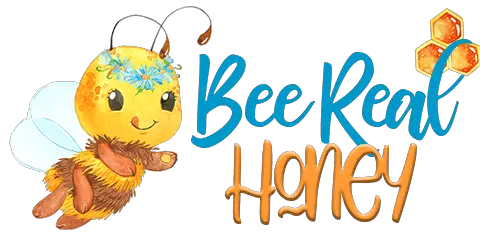*This post may have affiliate links, which means I may receive commissions if you choose to purchase through links I provide (at no extra cost to you). As an Amazon Associate I earn from qualifying purchases. Please read my disclaimer for additional details..
Table of Contents
About Bees
Different kinds of bees have different characteristics and personalities unique to them. There are many breeds, but honey bees are perhaps the most popular.
Honey bees and bumblebees are social bees headed by a queen and served by male drones and female worker bees.
Solitary bees are smaller in size, living in smaller units typically comprising of a couple of bees. Solitary bees work independently, although they may be in a large number in a single place.
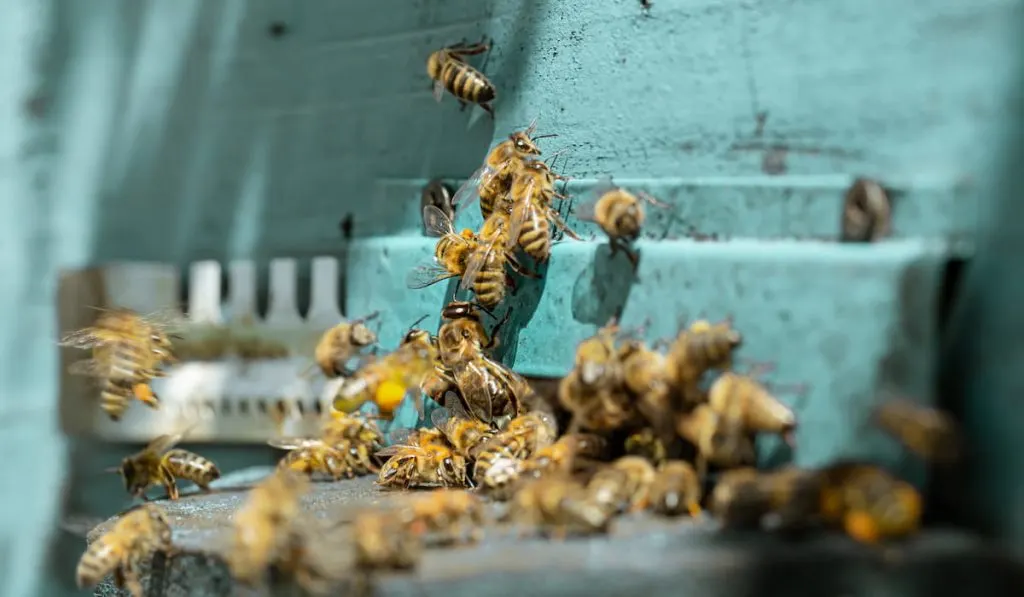
Mason bees, leaf-cutter bees, and mining bees are all examples of solitary bees.
Bees are directly affected by their environment. This directly impacts their behavior and success, leading to a significant difference across climates.
For example, the active foraging season for bees will last much longer in the warmer southern hemisphere than it would in the colder northern hemisphere.
Therefore, you should familiarize yourself with the local environment to establish informed procedures and practices for your beekeeping activities. You can also seek expert guidance from your local area beekeeping associations.
Bees are globally significant for their activities, like pollination, because so many species, including humans, greatly depend on them for their sustenance and survival.
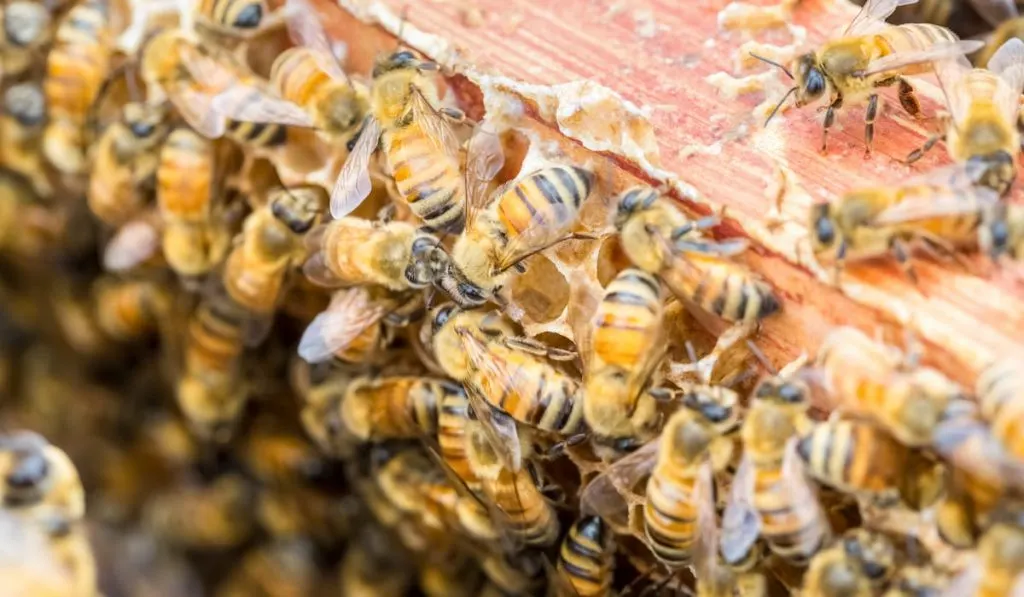
Where to Purchase Bees
As a beginner, you may purchase bees or hire them.
Communities have beekeeping associations that have a “try-before-you-buy” policy that allows people to borrow or rent beehives and bees for a short time, under the supervision of an experienced beekeeper.
If everything goes according to plan, you may purchase the hive and bees directly from the organization once they have established themselves.
Your local beekeeping association can also help you with information if there are any bees for sale or any bee auctions with their specific event dates and time.
You can also look through periodicals or utilize a mail-order business like National Bee Supplies to acquire them.
For a beginner, the most crucial thing when venturing into beekeeping is to start with the more gentle ones.
Bees have different temperaments, and socializing yourself with the more docile ones will help you find a manageable colony and avoid stress.
On the other hand, hiring bees can be a good choice. Local beekeeping groups will always connect you to aspiring bee keepers with expert guidance, who will gladly rent the plot.
You can arrange compensation negotiations and inspection of the desired bee hive property and spot because not all properties are appropriate for bees.
The main pointers that beekeepers look for include an area that is sunny, sheltered, easily accessible by car, and has plenty of foraging opportunities around.
“Rent” agreements between the beekeepers and landowners are almost always informal, usually consisting of a jar of honey per hive at every harvest.
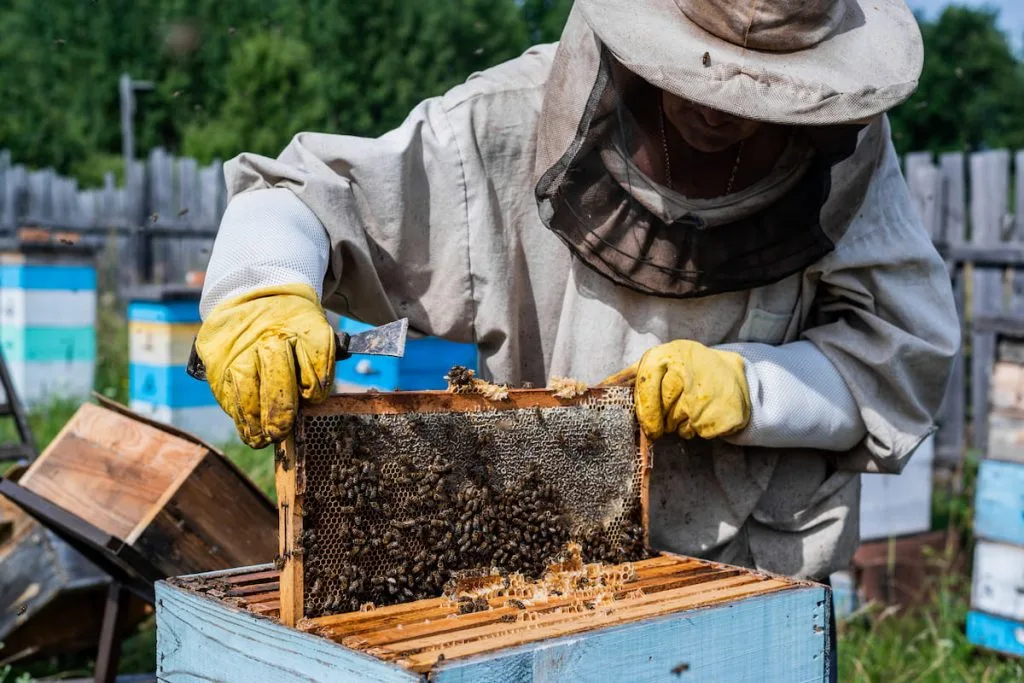
Things to Consider When Getting Started With Beekeeping
When to Start
Bees’ behavior is directly influenced by the environment in which they live. Climate will, therefore, heavily dictate your timing when preparing to start.
Local experts and beekeepers might also help you with relevant information specific to your locality.
However, early spring is the best time to start a hive when the weather is warm.
As the likelihood of frost decreases or disappears, early flowers will bloom, providing your bees with the opportunity to gather nectar and pollen.
Bees do not need much space but rather plenty of flowers to forage.
Therefore, to be fully prepared, it is recommended that you do all of your planning and get everything installed and ready before spring, as it is sometimes challenging to find a source of beehives and bees.
It is often too late to get started if you have not secured your bees by January or February.
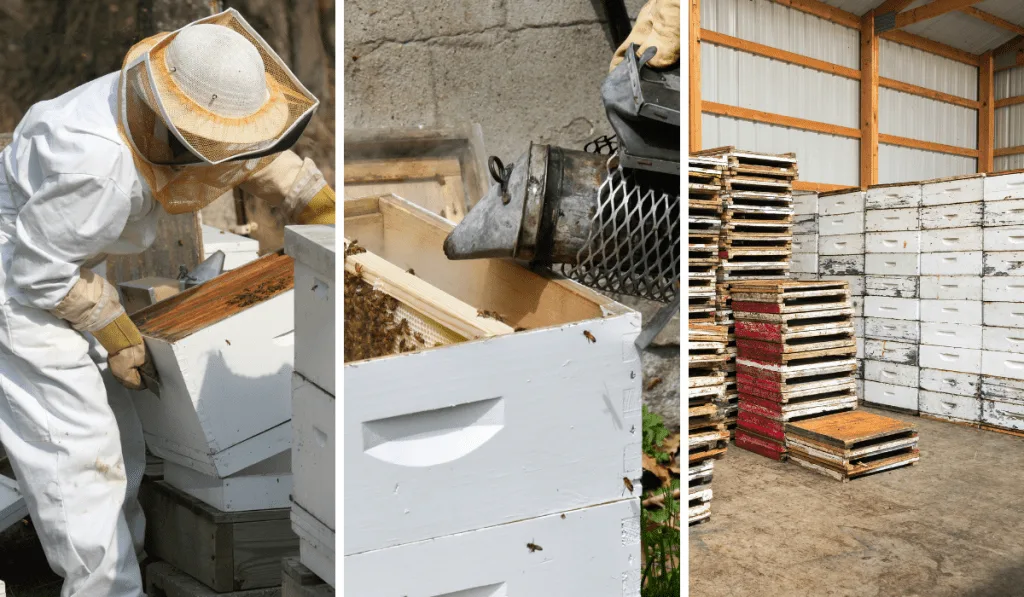
What Equipment do You Need?
When it comes to clothes, an all-in-one outfit with a veil, along with a decent pair of gloves and sturdy boots, is recommended for maximum protection and prevention against stings.
Additionally, you will require a smoker to blow smoke around the hive when working on it.
Bees automatically link smoke with forest fires and, believing they are in danger, will flee, leaving the hive for your exploration.
A hive tool will also come in handy when working on the hive.
Buying a beehive
It’s common for novices to start with the National, a simple square brown box, but you may also use a double-skinned WBC hive (named after William Broughton Carr), which is more involved but more elegant.
Friendly Bees for Beginners
1. Golden Italian Honey Bee (Apis mellifera ligustica)
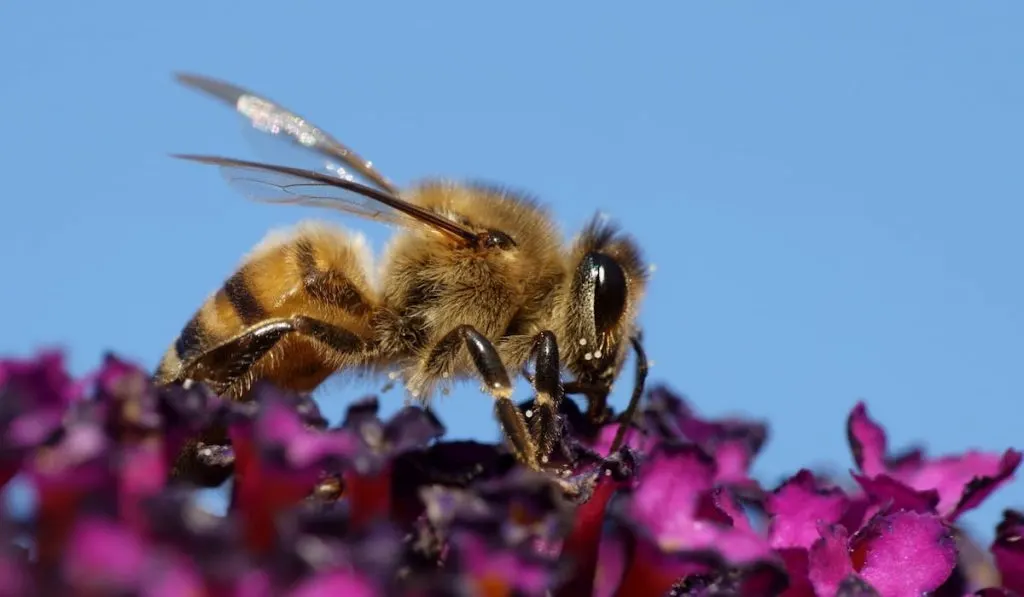
This breed is the most common bee in North America known for its beauty and fantastic personality.
Their beauty begins with their form, golden hue, and distinct stripes. The “Italian Cordovan” is a sub-strain with light beige color and no stripes.
Italians are also prolific and clean housekeepers, with gentle behavior and a high productivity rate.
However, these hardworking honey producers sometimes wander from their own hives and occasionally steal honey from neighboring colonies.
They may sometimes get lost when foraging for supplies. All in all, they are incredibly adorable and easy to find.
2. Russian Honeybees (a hybrid breed)
Many first-time beekeepers may consider adopting Russian honey bees.
The Russian honey bee is popular because of its mite resistance and ability to withstand winter. If you live in a cooler area, the Russian honey bee is an excellent breed to start with.
However, beginning with Russian honey bees may pose significant drawbacks.
- First, the breed is prone to swarming, which may prove difficult for a beginner to control.
- Second, Russian honey bees are more protective and may be a bit more aggressive, necessitating better protection.
- Finally, Russian honey bees don’t produce as much honey compared to other more productive varieties.
3. The Carnolian (Apis mellifera carnica)
The Carnolians originated in Austria and Slovenia. They are hard workers, often working earlier and later than others. They are also mild and pest resistant.
They grow quickly and adjust hive size depending on food availability and can travel long distances when foraging for supplies, even in the cold.
This makes the breed the most ideal for remote areas with uncertain food supplies, especially rainy or cold climates.
However, they are prone to swarming and struggle during hot temperatures.
4. The Caucasian Honey Bee (Apis mellifera caucasca)
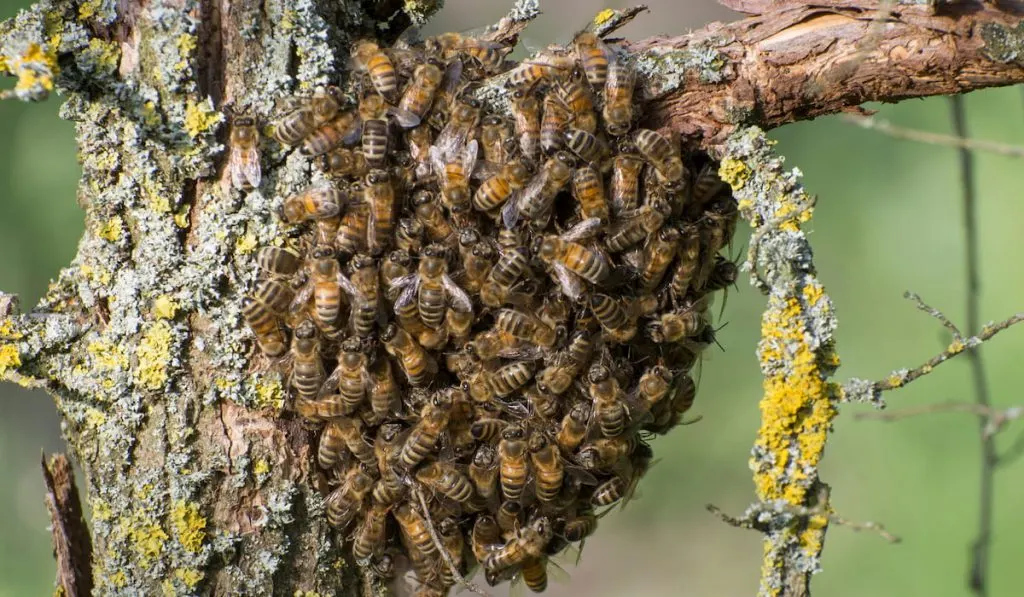
The Caucasian honey bee is considered gentle, and unlikely to attack a nervous beekeeper.
However, while it is nice to start with a softer bee, the goal of beekeeping is for honey production, and Caucasian honey bees aren’t popular for honey production.
For this, the low output may be disheartening, and you might want to consider this before opting for the Caucasian honey bee.
5. Feral Bees (Apis sp)
If you don’t care about lineage, you may adopt a wild bee swarm. Feral bees may be a combination of races that may be demon bees or the most awesome genetic mashup ever seen.
Although they are ideally adaptable to any environment they choose, they are highly unpredictable and need to be monitored.
Tips for Beginner Bee Keepers
Taking Care of Bees

Bees can live without human intervention. However, you have to clean and examine your hives in the spring when the weather warms up.
This includes removing winter debris, dead bees and cobwebs, and replacing old broken frames.
Until July, the colony will gradually expand, so you need to check regularly to ensure there’s enough space for egg-laying and honey storage to avoid swarming, which may drive the queen to depart the hive with half the worker bees to start a new colony.
Although those left behind will eventually sense they are queenless and will feed one of the larvae with royal jelly to have a new queen, you will have lost half the workforce, leading to a reduction in the honey yield.
Collecting Honey
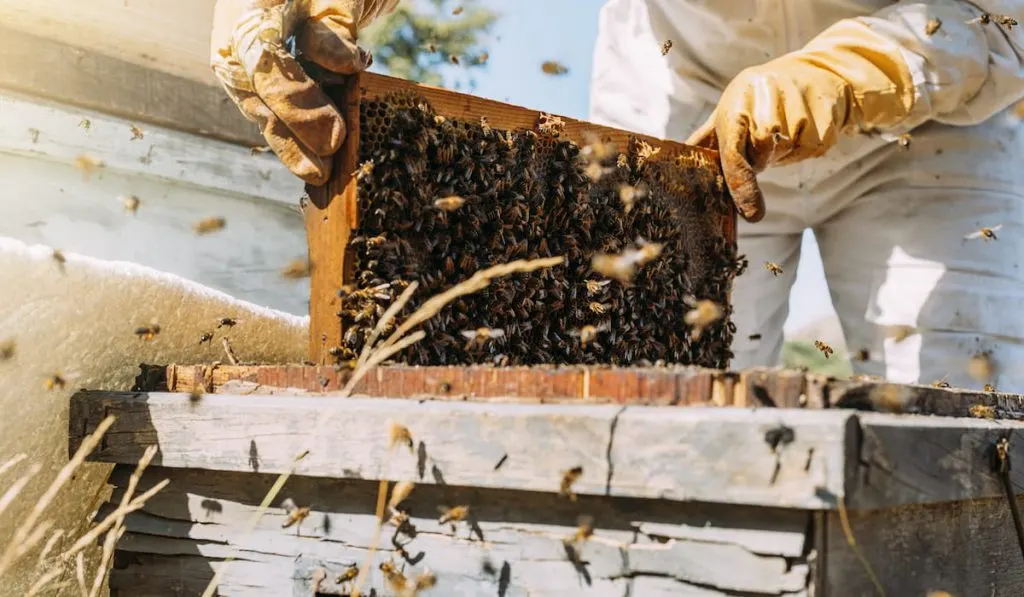
A beekeeper’s expertise is knowing how much honey to collect and how much to leave to keep the colony happy since they depend on the fact that bees produce more honey than they need.
Honeybees produce and store between 10kg-30kg of honey in the hive but only require around 10kg.
In August, when most flowers blossom, you may gather your honey. A good summer yields 40lbs.
In fall, give your bees a sugar solution to replace the “stolen” honey. If you’ve kept out unwanted guests like woodpeckers and mice, you can close up shop for the winter.
If you wish to sell your honey, you must follow specific laws and regulations by standard bodies governing food supplies.
Conclusion
As a beginner, beekeeping is a process of gradual and steady learning.
As a natural beekeeper, you are part of a continuously growing subculture that the general beekeeping community is unaware of.
It is advisable to join a local beekeeping group, even if they disagree with your techniques.
Resources
- https://friendsoftheearth.uk/nature/14-facts-you-need-know-about-bees
- https://beekeepinginsider.com/best-honey-bees-for-beginners/
- https://jrpiercefamilyfarm.com/2020/05/15/what-is-the-best-breed-of-bees-for-beginners/
- https://modernfarmer.com/2013/05/which-bee-is-right-for-you/
- https://beebuilt.com/pages/beekeeping-for-beginners
- https://www.thespruce.com/beekeeping-for-beginners-step-by-step-3016540
- https://www.countryliving.com/uk/wildlife/farming/how-to/a276/beekeeping-for-beginners/
